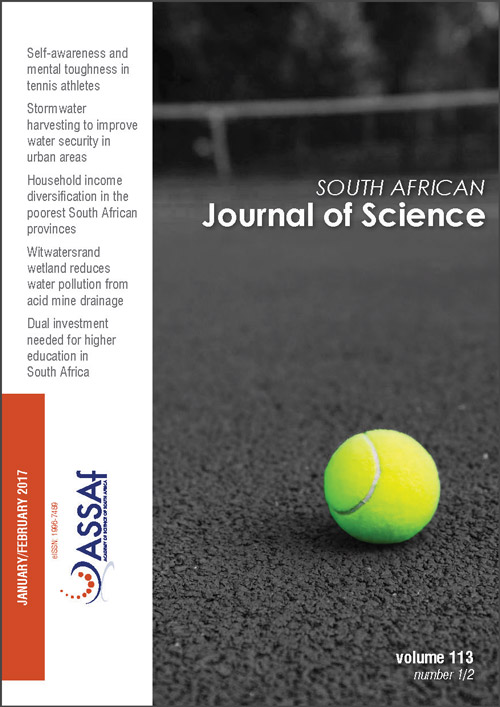Osteopathology and insect traces in the Australopithecus africanus skeleton StW 431
DOI:
https://doi.org/10.17159/sajs.2017/20160143Keywords:
Sterkfontein, micro computed tomography, spinal degenerative joint disease, palaeopathology, taphonomyAbstract
We present the first application of high-resolution micro computed tomography in an analysis of both the internal and external morphology of the lumbar region of StW 431 – a hominin skeleton recovered from Member 4 infill of the Sterkfontein Caves (South Africa) in 1987. The lumbar vertebrae of the individual present a number of proliferative and erosive bony processes, which were investigated in this study. Investigations suggest a complex history of taphonomic alteration to pre-existing spinal degenerative joint disease (SDJD) as well as post-mortem modification by an unknown insect. This study is in agreement with previous pathological diagnoses of SDJD which affected StW 431 and is the first time insect traces on this hominin are described. The results of this analysis attest to the complex series of post-mortem processes affecting the Sterkfontein site and its fossil assemblages.
Significance:- First application of high-resolution micro computed tomography of the lumbar region of StW 431, a partial skeleton of Australopithecus africanus, attests to pre-existing degenerative joint disease and identifies post-mortem modification by an unknown insect.
- The co-occurrence of degenerative pathology and insect modification may not be unique to StW 431. A combination of traditional morphoscopic analysis and non-invasive high-resolution tomography is recommended.
Downloads
Published
Issue
Section
License

All articles are published under a Creative Commons Attribution 4.0 International Licence
Copyright is retained by the authors. Readers are welcome to reproduce, share and adapt the content without permission provided the source is attributed.
Disclaimer: The publisher and editors accept no responsibility for statements made by the authors
How to Cite
- Abstract 975
- PDF 599
- EPUB 207
- XML 263
- Supplementary Material 172












.png)